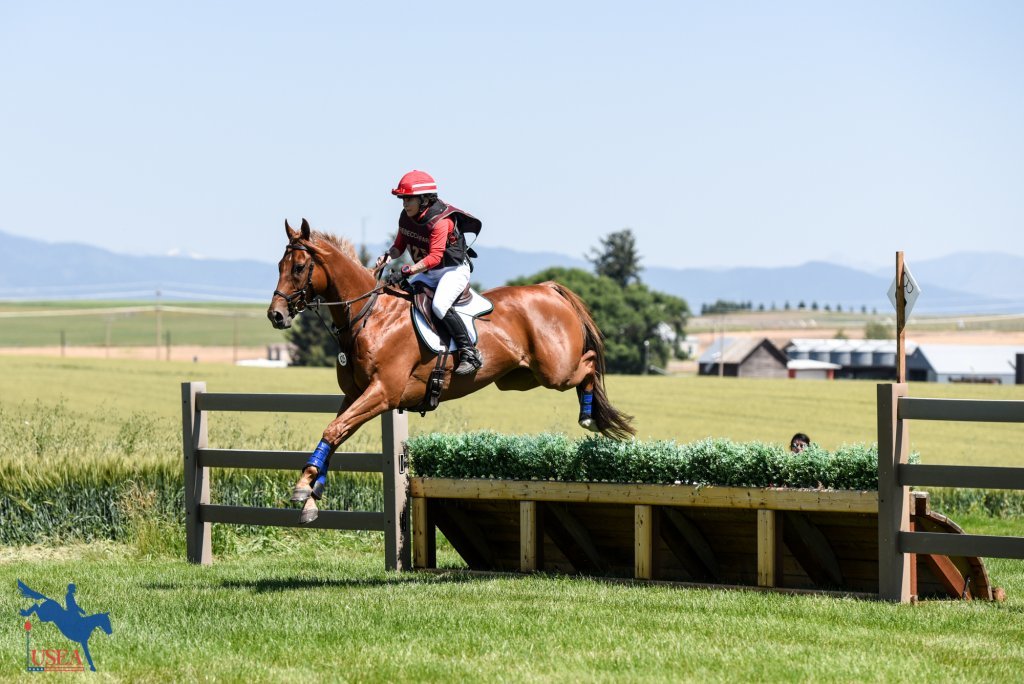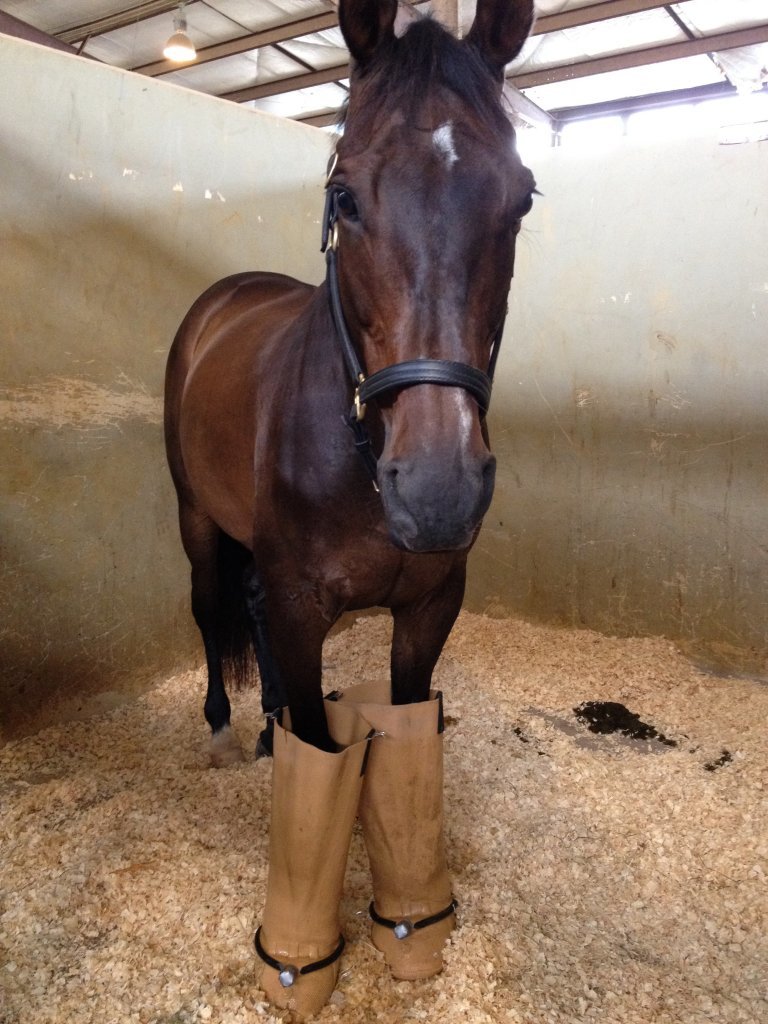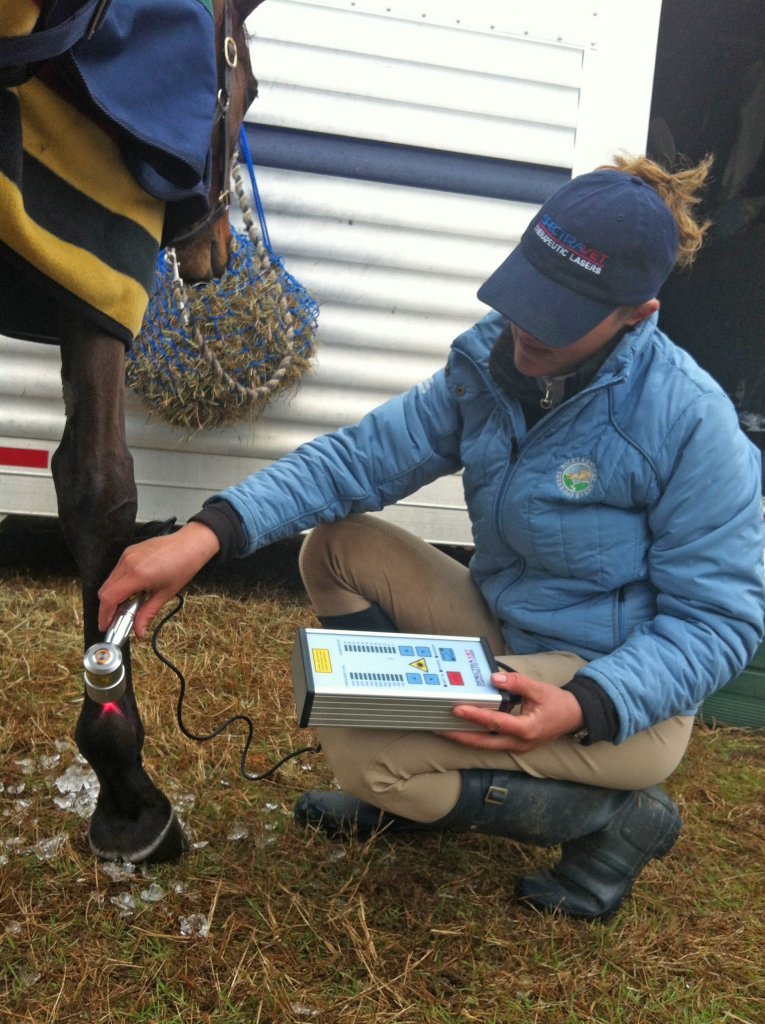Turn up the Temperature with Therapies used in the USEA Classic Series

Fire and ice, or in this case ice boots, ice packs, lasers, and magnetic blankets can be seen in the corners of barn aisles, in tack stalls at events, and on fit horses after cross-country. Whether it’s galloping over steeplechase, navigating through roads and tracks, or show jumping on the final day, the United States Eventing Association (USEA) Classic Series Events involves an elevated level of horse fitness to tackle Endurance Day.
A surge in trot sets, canter sets, and training time; the increase in fitness brings an increase in daily horse maintenance, and as Max Corcoran pointed out “horses are just like people in intense training,” in The Road to Recovery. Icing and heat therapy are two age-old traditions used to maintain wellness, prevent injury, and relieve soreness in horses – especially important for horses competing in Classic Series Events. The benefits, effects, how long, and how often are several questions the USEA asked three highly respected veterinarians: Dr. Jeff Beshear of Old Dominion Equine Associates, Dr. Jill Copenhagen of Peak Performance Equine Services, and Dr. Maureen Kelleher of Virginia Tech Marion duPont Scott Equine Medical Center.

Lia Colombi and Doc Duffy in Steeplechase at the Rebecca Farm Classic Three-Day Event. USEA/Leslie Mintz Photo
With years of experience keeping sport horses happy, a longtime vet to four-star eventers including Sharon White and Emily Beshear, and an upper level eventer himself, Dr. Jeff Beshear explains that “cold therapy is [effective] at reducing inflammation and pain."
Beshear recommends icing a horse after cross-country, a difficult jump school, or a canter set. “I ice for 20 minutes, then allow the area to warm up and repeat. After 20 minutes [of icing] the cold doesn’t have much effect until the area warms again. I like to do two to three icings over a two-hour period.”

A horse standing in ice boots post cross-country. USEA/Jessica Duffy Photo
“Icing acts as an anti-inflammatory,” said Dr. Jill Copenhagen. Copenhagen is a vet whose treated horses for David O’Connor, Karen O’Connor, and Lauren Kieffer and whose represented Peak Performance at international competitions such as Kentucky Three-Day Event CCI4*, Fair Hill International, Boekelo CCI, and Great Meadow International CICO3*.
Since horses don’t have muscles below their knees, Copenhagen explained that “icing can help with the recovery of tendons and ligaments in the distal limb. Icing is beneficial in terms of pain relief, post athletic activity, and soft tissue recovery.”
Copenhagen described that a horse’s feet were the most common body part she sees in ice because “firm ground can lead to sore, inflamed feet.”
“If you were to palpate your horse’s legs or feet after a hard workout, there will always be an elevated temperature. There’s increase in blood flow after athletic activity and icing helps the area return to baseline. It is possible to ice too much, so the general recommendation is 20 minutes on and 20 minutes off. Overexposure to cold therapy can cause skin irritation,” said Copenhagen.
Heat therapies such as magnetic blankets, Magna Wave systems, and lasers are mostly used to target muscles. Copenhagen explained that “heat therapy helps improve blood circulation and a lot of the treatments deal with muscle and muscle recovery.”

A laser, a popular form of heat therapy, can be used prior to exercise or post exercise. USEA/Leslie Mintz Photo.
The clinical assistant professor of Sports Medicine and Surgery at one of the highest rated Equine Medical Center’s in the country, Virginia Tech Marion duPont Scott Equine Medical Center; Dr. Maureen Kelleher, DVM, CVA, Diplomate ACVS is a vet whose work with equine care is held in high regard.
Kelleher explained “the main benefit of icing is to decrease inflammation. On a cellular level, increased temperatures in tissues speed up the metabolic activity. By surrounding a body area i.e. feet, limbs, back with ice, we are decreasing the cell's manufacture of inflammatory signals. Additionally, icing will cause blood vessels in the cooled area to constrict, decreasing the flow of blood in and out of the cooled region.”
“Heat works the opposite of ice, warmth in tissues increases cellular activity, and will cause the blood vessels in the area to dilate – increasing blood flow to the area. Heat will be beneficial to increase cellular healing activity and improve blood flow to injured areas,” said Kelleher.
“Icing is best in situations that are more acute in nature or in situations where you want to reduce the risk of inflammation. After exercise, after an acute injury, when you see a sudden increase in swelling, icing is ideal. Heat is best applied in more chronic situations such as with warming up stiff muscles and joints with osteoarthritis. In these cases you would apply the warmth prior to exercise to help ‘speed up’ the warm up process for muscles and joints. Typically, when using heat therapy to warm up tissues prior to exercise, applying the source about 5-20 minutes prior to the ride is plenty of time,” Kelleher described.
To compare ice to heat, “it’s all a balancing act,” said Copenhagen.
About the USEA Classic Series
The USEA Classic Series keeps the spirit of the classic long format three-day events alive for Beginner Novice through the Preliminary levels. Competitors have the opportunity to experience the rush of endurance day, including roads and tracks, steeplechase, the vet box, and cross country, as well as participate in formal veterinary inspections and educational activities with experts on the ins and outs of competing in a long format three-day event.
Riders who compete in a USEA Classic Series event during the year will have the chance to win a variety of prizes at the events and will also be entered in a drawing held at the USEA Year End Award Ceremony for a year’s supply of SmartPak supplements and a custom fitted Stackhouse and Ellis saddle. Click here to learn more about the USEA Classic Series.
The USEA would like to thank Parker Equine Insurance, FLAIR, SmartPak Equine, Stackhouse & Ellis Saddles, and Eventing Training Online for sponsoring the USEA Classic Series.














